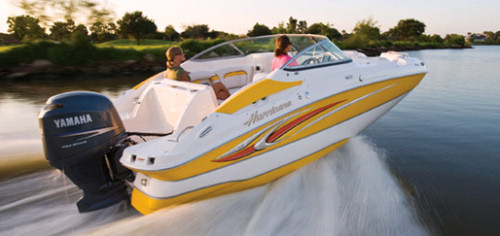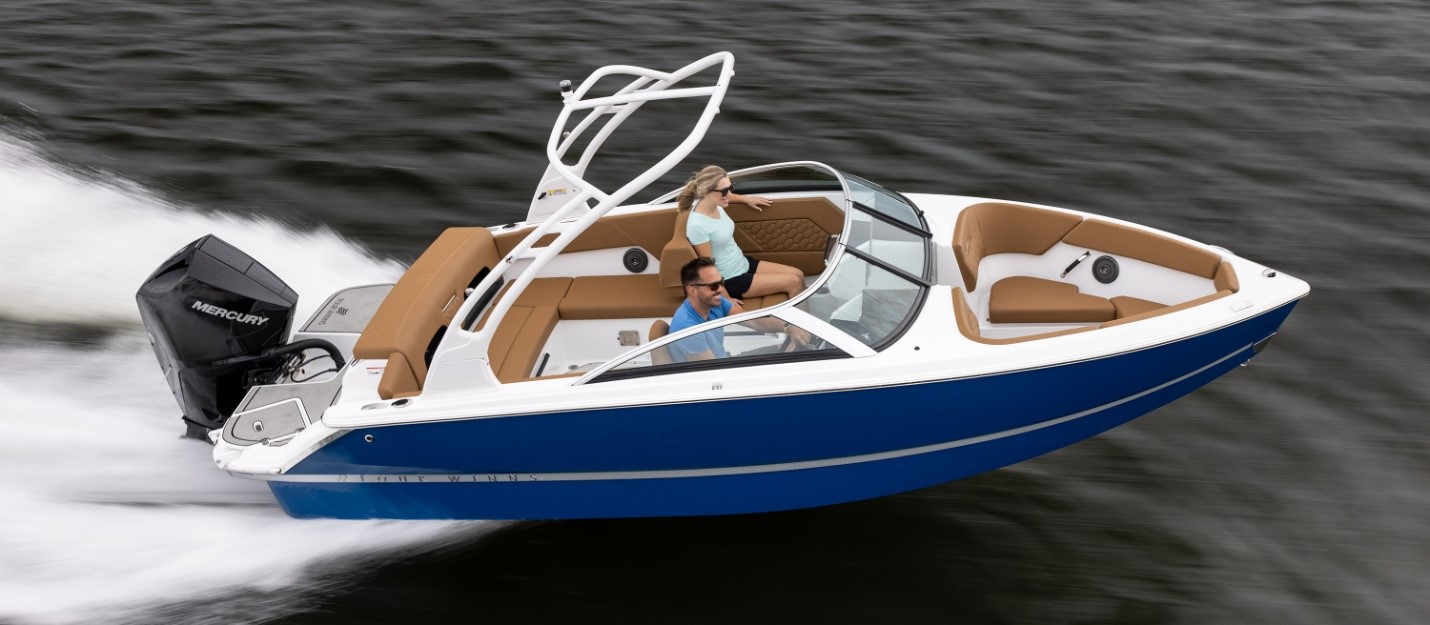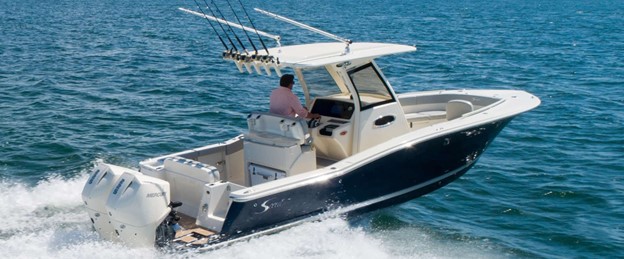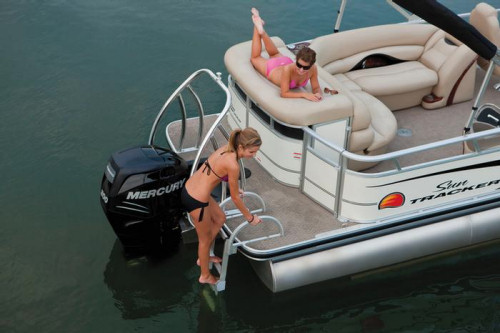Engine Buying Tips: How to Select the Right Horsepower for an Outboard Boat, Part 2

Choose the right power and your boat will perform the way you want it to—and probably save you money on fuel as well. Here are some added tips from Martha Comfort’s Boat-Buying Handbook.
5. Sportboats, Runabouts, and Deckboats
Something on the order of 90% of all sportboats are powered by sterndrive engines. However, in the last five years or so there has been a resurgence of interest in outboard power for sportboats as more and more builders have made these models available. This development is giving consumers a good option that they largely did not have 10 years ago.

When selecting power for a sportboat perhaps the most important thing to avoid is under-powering the boat. Some boat builders and dealers typically will install 3.0L 135-hp engines in the smallest sportboats to keep the total price of the boat as low as possible. They call them “entry-level” boats. This package might be sufficient for a youngster just starting out or for a newbie couple, but for slalom skiing and hauling a boat full of guests it is simply not enough.
A single 115 to 150-hp engine can produce a reasonable performance for an entry-level fiberglass sportboat from 17'-19', depending on the load. With it, a powerboat in this range can have a top speed from 40 to 45 mph, with cruising speeds in the mid-20s.

Consumer Caveat: Be careful not to overpower a small boat of any type. Always follow the USCG max hp rating that appears on the plate on every boat. Over-powering a boat can make them hard to control and dangerous.
Larger fiberglass boats will need larger engines and today we are seeing 22' to 25' sportboats powered by 250-hp to 300-hp engines.
For Towing Sports: Boat owners wanting to tow waterskiers and wakeboarders should consider engines with strong torque in the lower RPM ranges because it takes lots of power to get participants up on their boards. And even more, power is required when there is a boatload of guests.
6. Center Console, Walkaround and OB Small Express
Anglers going long distances will want to carefully balance fuel consumption, best cruise speed, and range. After a long day of fishing, it is no fun coming back at night to an island, or even a poorly marked inlet at low speed because of low fuel. It is always wise in a small boat to get back before sundown, and that means you have to know how fast you can go with the fuel you have left onboard, and what time to bring the lines in.
Center console boats from 20'-25' can usually perform well with a single outboard from 200 to 300-hp, depending on load and top speed expectations. Over 25'-26', twin engines are typically recommended.
Consumer Caveat: Buyers should remember that most boat tests are done with just two people aboard. All small boats are weight-sensitive, so owners planning on loading a boat with guests should plan on robust power options.
Big Single or Smaller Twins? All outboard engines are much more reliable than they were 15 years ago. As a result, many offshore anglers are opting for the advantages of a larger single rather than smaller twins, equaling the same horsepower. Twins will weigh more and burn more fuel at a given RPM and speed -- thus reducing range. On the other hand, some anglers feel more comfortable offshore with redundant power. Take your pick.

Somewhere around 25’ most boats going offshore will be powered by twin outboards, typically from 200-hp to 250-hp. Around 33' to 35’ offshore anglers in center consoles will hang three engines on the transom with anything from 225-hp to 350-hp each. At about 40’ some center consoles and express fishboats start hanging four engines. Whether or not all of this expensive iron on the transom is necessary is a matter for the individual buyer to decide depending on his or her mission.
Make sure you know what octane fuel your large outboard is recommended to run on. Some require high test fuel.
7. Pontoon Boats
For the last decade, pontoon boats have been the most popular type of boat on the market. The invention of the tri-toon and new center console designs have made pontoon boats faster so that they can now be used for skiing and towing, in addition to cruising and entertaining.

Most pontoon boats have twin toons and these are displacement boats; they can only be pushed so fast and adding big engines will not make them go faster and is counterproductive. Depending on how large and heavy the twin toon is, most can be pushed close to their maximum speed with a single 90-hp engine, and many people are quite content with a 50-hp engine driving their toons.
Tri-toons are another story. Because of their added buoyancy, these boats can get up and plane and typically have WOT speeds in the 40-mph range. Some new tri-toons can go 55 mph to 60 mph when powered with twin 300-hp engines. There is even one large pontoon boat on the market with triple 300-hp engines. They can be powered with 150-hp to 300-hp single engines.
Towing Considerations: Owners wishing to tow water skiers or wakeboarders must buy a tri-toon. Because all tri-toons are hard to get up to what we might consider "planing speeds," an engine with strong low-end torque is advisable.